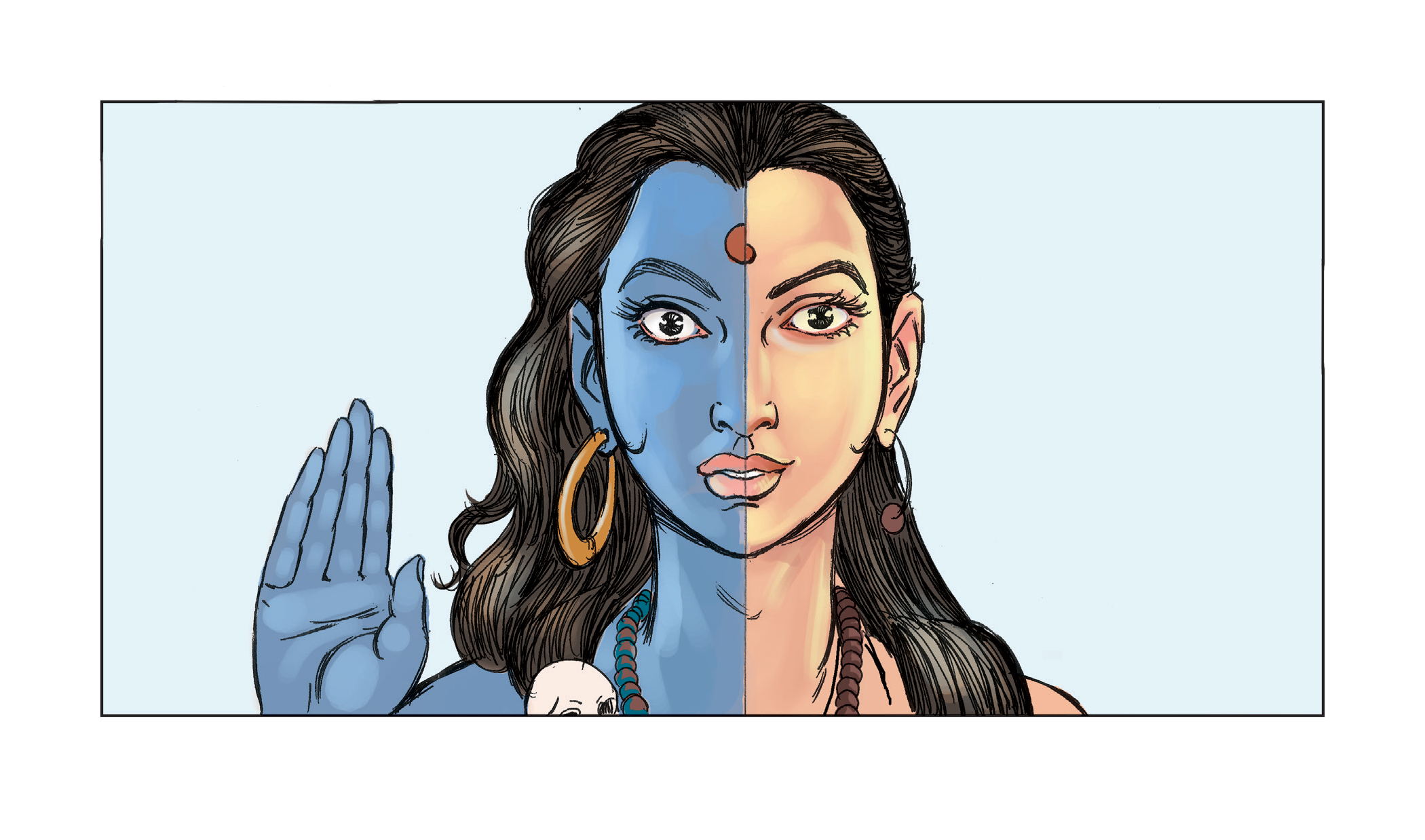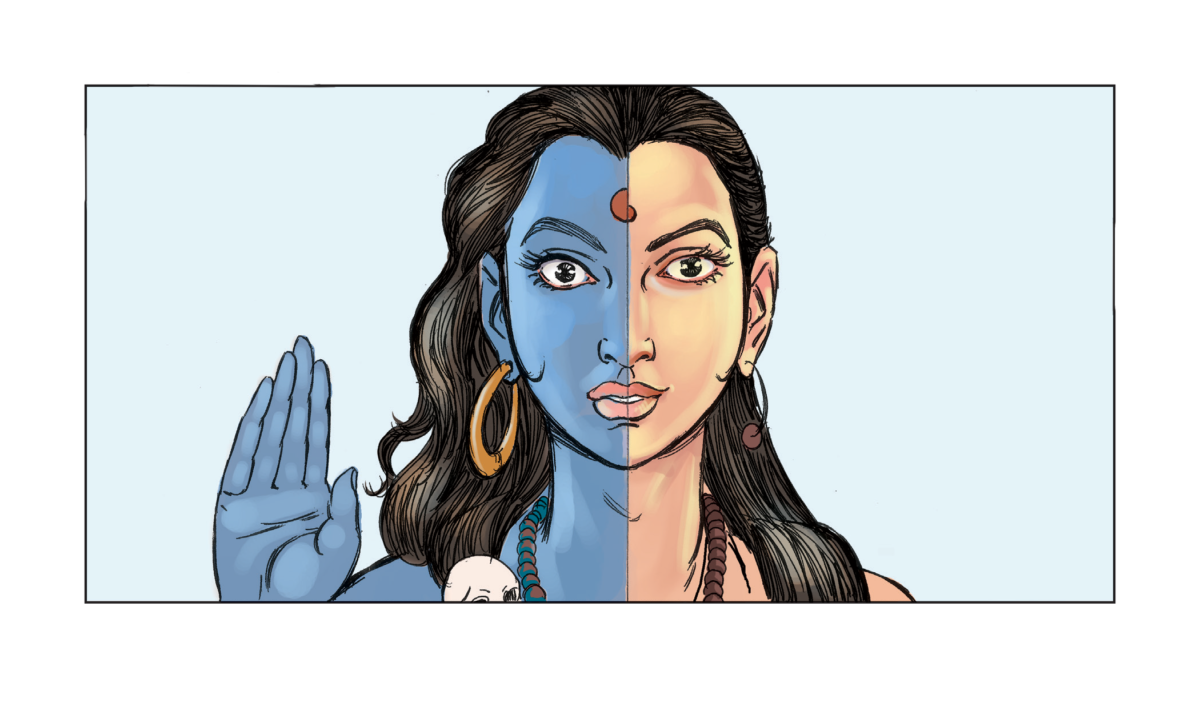Navratri celebrations are on in full swing as people celebrate the Devi Durga and her nine avatars. The energy during this festival has a particular fervour of its own that is quintessentially its own. The divine feminine energy rises like a wave across the country, vibrant and powerful.
There are hundreds of temples dedicated to the worship of Shakti Devi across India where the Goddess is worshipped and celebrated throughout the year. Below are five temples out of these that are considered to be particularly powerful and attract millions of devotees each year, and during Navratri.
Vaishno Devi, Jammu and Kashmir:
With thousands of devotees visiting the Vaishno Devi temple each year, this is probably the most well-known Devi temple in the country. The Shakti tradition considers this to be one of the Shakti Pitha and the Devi here is said to be a manifestation of Mahakali, Mahalakshmi and Mahasaraswati, and Vaishno Devi is said to worship and wait for the arrival of Lord Vishnu. Devotees often make the 13km uphill trek on foot to the temple which is located on the Trikuta mountain at a height of 5000 feet. A geological study of the sacred cave in which the Goddess is said to reside has revealed it to be about a million years old. The temple celebrates Devi Durga’s triumph over evil for nine nights during Navratri with much splendour and pomp.

Kamakhya Devi, Assam:
One of the oldest four of the Shakti Pithas, and considered one of the most powerful Devi temples in the country, the Kamakhya Devi temple is an extremely revered spot to worship Shakti. The temple is said to have been built on the spot where Sati’s womb landed as Lord Shiva danced the tandav holding her lifeless corpse. This is one of the reasons why Kamakhya Devi is said to be an extremely powerful source of feminine power and the temple an all-female deity place of worship. The structure of the temple indicates its origins to be from the 8th or 9th century, with many subsequent rebuilds. While the most well-known festival celebrated at Kamakhya Devi temple is the Ambubachi Mela (which celebrates the menstruation of the Goddess), the festival of Navratri too is celebrated here and attracts thousands of devotees each year.
Chamundeshwari Temple, Karnataka:
Known as Krouncha Pitha, the Chamundeshwari Temple is one of the main Shakti Pithas in the country. This is the spot where Sati’s hair is said to have fallen when Lord Shiva danced the tandav holding her corpse. The temple is located on top of the Chamundi Hills about 13kms away from Mysuru, and it is on top of this hill that Devi Durga is said to have slayed Mahishasura. Chamundeshwari is a frighteningly fierce form of Durga. Navratri is an important festival for the temple, and it is celebrated elaborately here each year, with the Goddess being decorated with nine different avatars to depict the Navadurgas.
Kalighat Temple, West Bengal:
Dedicated to Goddess Kali, the Kalighat Temple in Kolkata is one of the Shakti Pithas in eastern India, and is said to be the sacred spot where the toes of Sati’s right foot fell. Ma Kali is an extremely fierce and powerful form of the Goddess who was born from Durga Devi’s fury, and she is associated primarily with death and violence but also with time, female empowerment, and motherly love. The idol of Goddess Kali in this temple has tongue and teeth made of gold, and the Goddess is depicted with a garland of skulls around her neck. During Durgotsav which is celebrated elaborately in West Bengal, hundreds of women visit this temple for Sindoor Khela where they smear each other with vermillion powder.
Harsiddhi Mata Temple, Madhya Pradesh:
Situated in the ancient city of Ujjain beside the Kshipra River, this temple is the spot where the scriptures say that Sati’s upper lip fell. However, the locals here believe that it was Sati’s elbow that fell here. The Goddess, in her Mahakali form here, is said to protect and safeguard the people of Ujjain. This temple was built by the legendary king Vikramaditya who requested the Goddess to come live in his kingdom where he may seek her blessings every day. According to the scriptures, the demon Andhakasur possessed a boon which enabled a form of him to appear from every drop of his blood that spilled. When he was pierced by Lord Shiva’s trident, Mahakali drank the demon’s blood, thus ensuring his death. This is why the Devi here is also called Rakt Dantika, or “the one with blood on her teeth”. The Goddess here is celebrated and worshipped with gorgeous festivity during Navratri.






